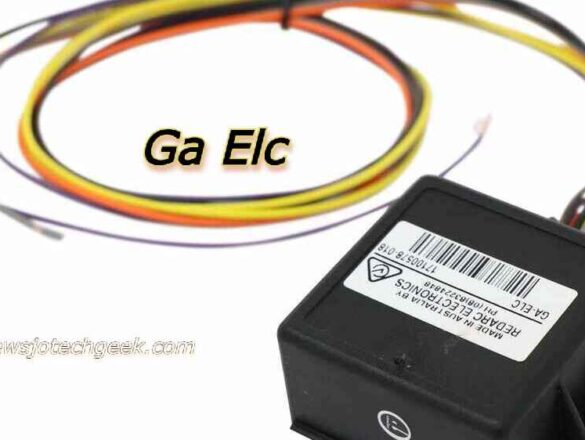Introduction
In today’s digital landscape, GA ELC, short for Google Analytics Enhanced Link Attribution—is a game-changer for website owners and marketers.
This powerful tool tracks user interactions with a website, allowing you to understand user behavior in greater detail.
By using GA ELC, you can gain insights into which links or pages are receiving the most attention, enabling you to optimize your site’s content and layout effectively.
With SEO being crucial for visibility and user engagement, integrating GA ELC can significantly boost your website’s performance in search engine rankings.
How GA ELC Helps in SEO Optimization
Understanding the direct connection between GA ELC and SEO can transform your approach to digital marketing.
When integrated properly, GA ELC improves your SEO strategy by providing valuable insights into user engagement, behavior, and interaction.
Understanding the Connection Between GA ELC and SEO
Google Analytics Enhanced Link Attribution helps track clicks on links within a page and attributes them accurately.
By understanding where users engage the most, you can prioritize these areas for optimization, which directly impacts your SEO ranking.
Improved Data for SEO Strategy
GA ELC enables better data collection, offering precise information on what works on your website.
This data helps in making informed decisions, optimizing user pathways, and improving the overall quality of your site’s content—all factors contributing to improved SEO ranking.
Best Practices for Implementing GA ELC for SEO
Using GA ELC effectively requires careful implementation. The right strategies ensure that the data you collect will directly contribute to better SEO performance.
Key Strategies to Leverage GA ELC for SEO
- Enhanced Link Attribution Setup: Make sure the enhanced link attribution feature is activated in Google Analytics.
- Tag Important Pages: Ensure that the pages with the highest user engagement are properly tagged and tracked.
- Focus on User Behavior Data: Use GA ELC data to analyze user interaction, such as which links or buttons users click the most.
Common Mistakes to Avoid in GA ELC Setup
- Incorrectly Tagging Links: Tagging errors can lead to inaccurate tracking, which negatively affects data collection.
- Failure to Track Events: Not tracking specific events, like clicks on buttons or forms, can lead to incomplete data analysis.
- Not Regularly Analyzing Data: GA ELC provides continuous tracking, and without periodic reviews, you could miss vital insights that could improve SEO.
Optimizing GA ELC for Better User Experience and SEO Ranking

GA ELC is not just about tracking interactions; it’s also about enhancing the user experience, which in turn supports SEO ranking.
How GA ELC Improves User Experience
By analyzing which links users are most interested in, you can identify areas to improve the overall user journey.
Optimizing those areas based on GA ELC insights ensures a smoother experience for visitors, which encourages longer visits and a decrease in bounce rates—key factors for better SEO.
Improving Bounce Rate with GA ELC Insights
GA ELC helps you identify where users exit the site. If certain pages or sections have high exit rates, it’s a signal that the content isn’t meeting user expectations.
By optimizing these pages, you can reduce bounce rates, improve SEO, and make your site more user-friendly.
How GA ELC Enhances Content Marketing Efforts
Effective content marketing is at the core of every SEO strategy.
GA ELC plays a vital role in making sure your content is aligned with user interests, improving engagement, and boosting your rankings.
Using GA ELC to Identify Top Content
One of the most valuable features of GA ELC is its ability to show which pieces of content are getting the most clicks.
By identifying high-performing content, you can replicate successful strategies across other pages, further boosting SEO.
Aligning GA ELC with Content Strategy
You can use GA ELC to track content performance on an ongoing basis.
This helps you optimize your content strategy by focusing on the types of content that attract the most engagement, ensuring that your site meets user needs.
GA ELC’s Role in Instant Search Intent and SEO
Search engines aim to satisfy instant intent, which refers to the immediate needs users have when they search. GA ELC plays a crucial role in optimizing your content for this purpose.
How GA ELC Supports Instant Search Intent
With GA ELC, you can see which pieces of content are being clicked the most, helping you refine your SEO strategy to align with users’ immediate needs.
For example, if users often click on a specific blog post or page, you can adjust other content to match this interest and improve the speed at which you fulfill search intent.
GA ELC and Mobile SEO Optimization
With more users accessing websites via mobile devices, mobile optimization has become crucial.
GA ELC supports this by providing detailed insights into mobile user behavior, which is essential for improving mobile SEO.
The Importance of Mobile SEO
Google now ranks websites based on mobile-friendliness. Sites that aren’t optimized for mobile devices suffer from lower rankings.
GA ELC helps monitor how users on mobile devices interact with your content, which is key for fine-tuning mobile optimization.
How GA ELC Improves Mobile SEO
By analyzing mobile-specific data, GA ELC allows you to identify any bottlenecks or issues with mobile user experience.
Fixing these issues not only enhances usability but also boosts your rankings on mobile search results.
Tracking GA ELC Performance with Analytics Tools
Monitoring and analyzing the performance of GA ELC is essential to ensuring that your SEO strategy is working.
Top Tools to Use with GA ELC
- Google Analytics: The main tool for tracking user data and behavior.
- Google Tag Manager: Useful for managing tags across your site without modifying code directly.
- Google Search Console: For insights into search rankings and user interactions with your site from Google search results.
Measuring GA ELC’s Impact on SEO
Regularly checking GA ELC data in conjunction with your SEO tools will allow you to make quick, data-driven decisions.
Metrics like time on page, click-through rates, and bounce rates will provide a clear picture of how well GA ELC is enhancing your SEO efforts.
Integrating GA ELC into Your E-commerce SEO Strategy
For e-commerce websites, GA ELC is a crucial tool for driving traffic and increasing conversions.
How GA ELC Helps E-commerce SEO
With e-commerce SEO, it’s vital to understand how customers interact with product pages.
GA ELC provides detailed data on which products or categories are clicked most frequently, enabling you to prioritize and optimize them for better visibility.
Tracking Conversion Metrics with GA ELC
By monitoring user paths and conversions, GA ELC helps you understand how customers make their purchase decisions.
This data is invaluable for creating more effective product pages that enhance SEO and drive sales.
The Future of GA ELC in SEO
As SEO continues to evolve, the role of GA ELC will expand. Here’s a look at where this tool might take us.
Emerging Trends in GA ELC
With the rise of AI and machine learning, GA ELC may soon provide even more personalized insights, enabling marketers to better predict user behavior and optimize SEO strategies.
The Future of SEO with GA ELC
GA ELC will continue to be integral to SEO optimization by improving attribution accuracy, tracking user engagement, and enhancing content strategies.
Its role in refining user experience and boosting rankings will only become more significant as search engines evolve.
Conclusion
Incorporating GA ELC into your SEO strategy isn’t just about tracking links; it’s about gaining actionable insights that lead to better optimization, higher user engagement, and improved rankings.
By understanding user behavior and search intent, you can make informed decisions to enhance your SEO efforts.




